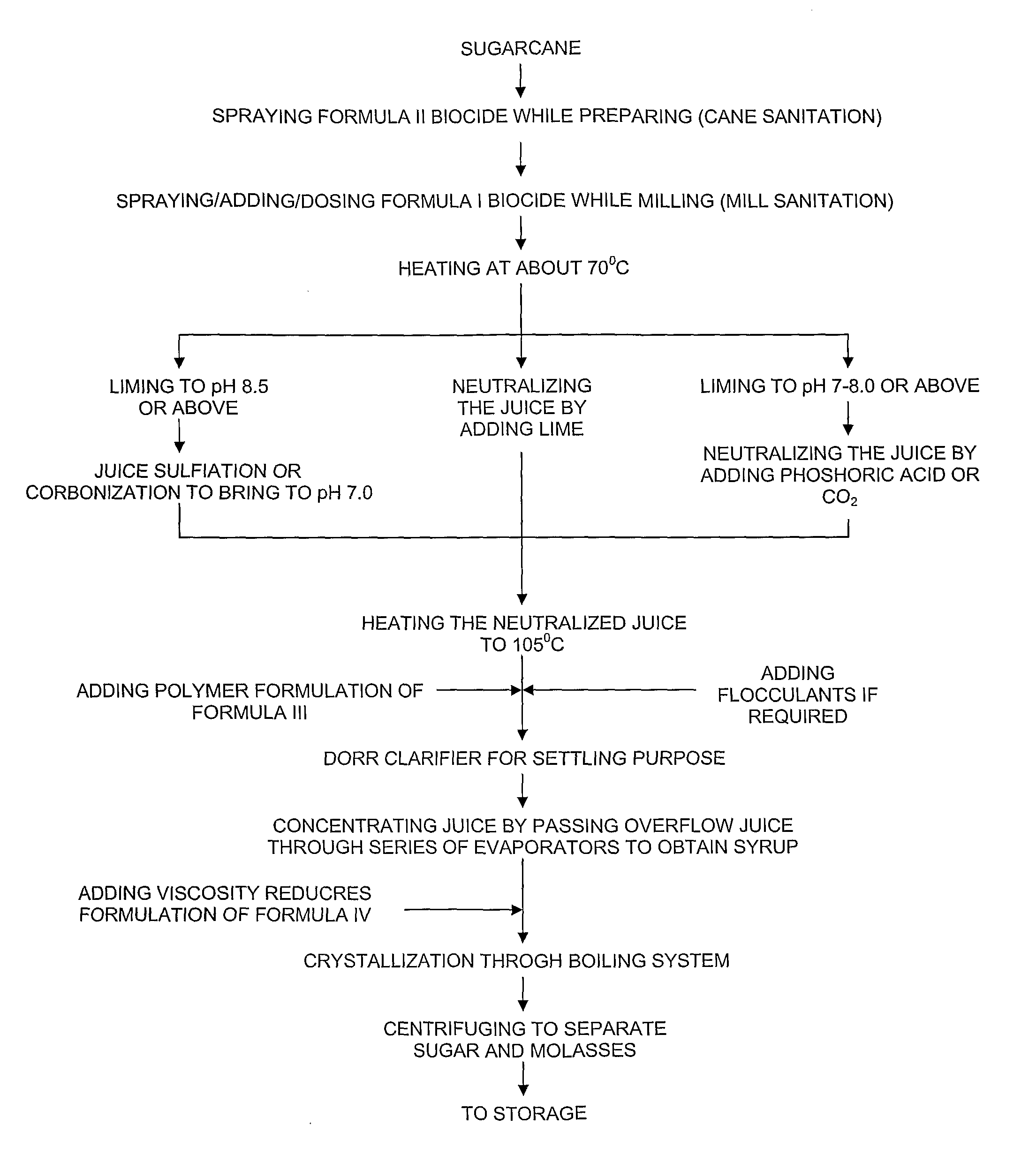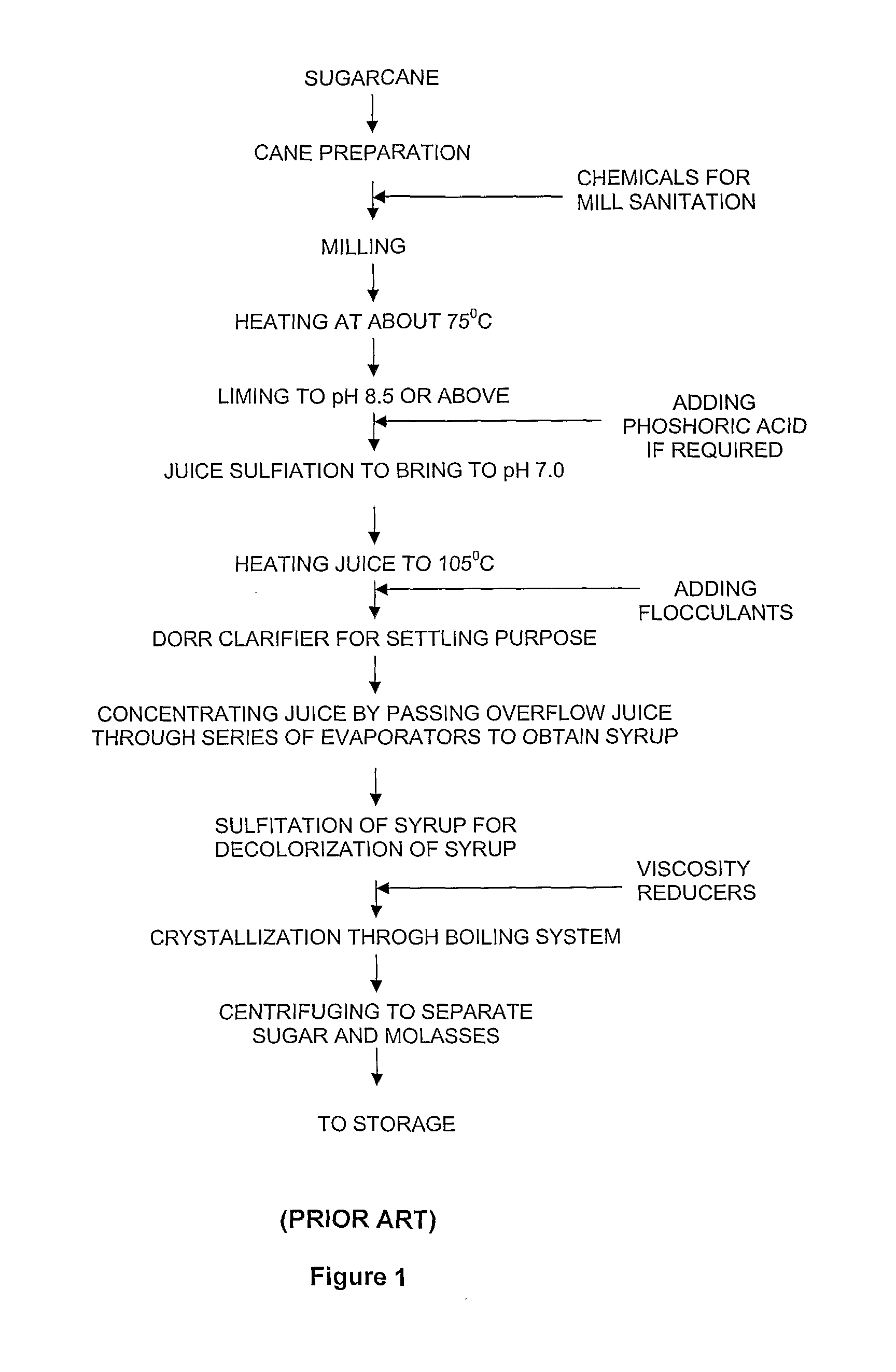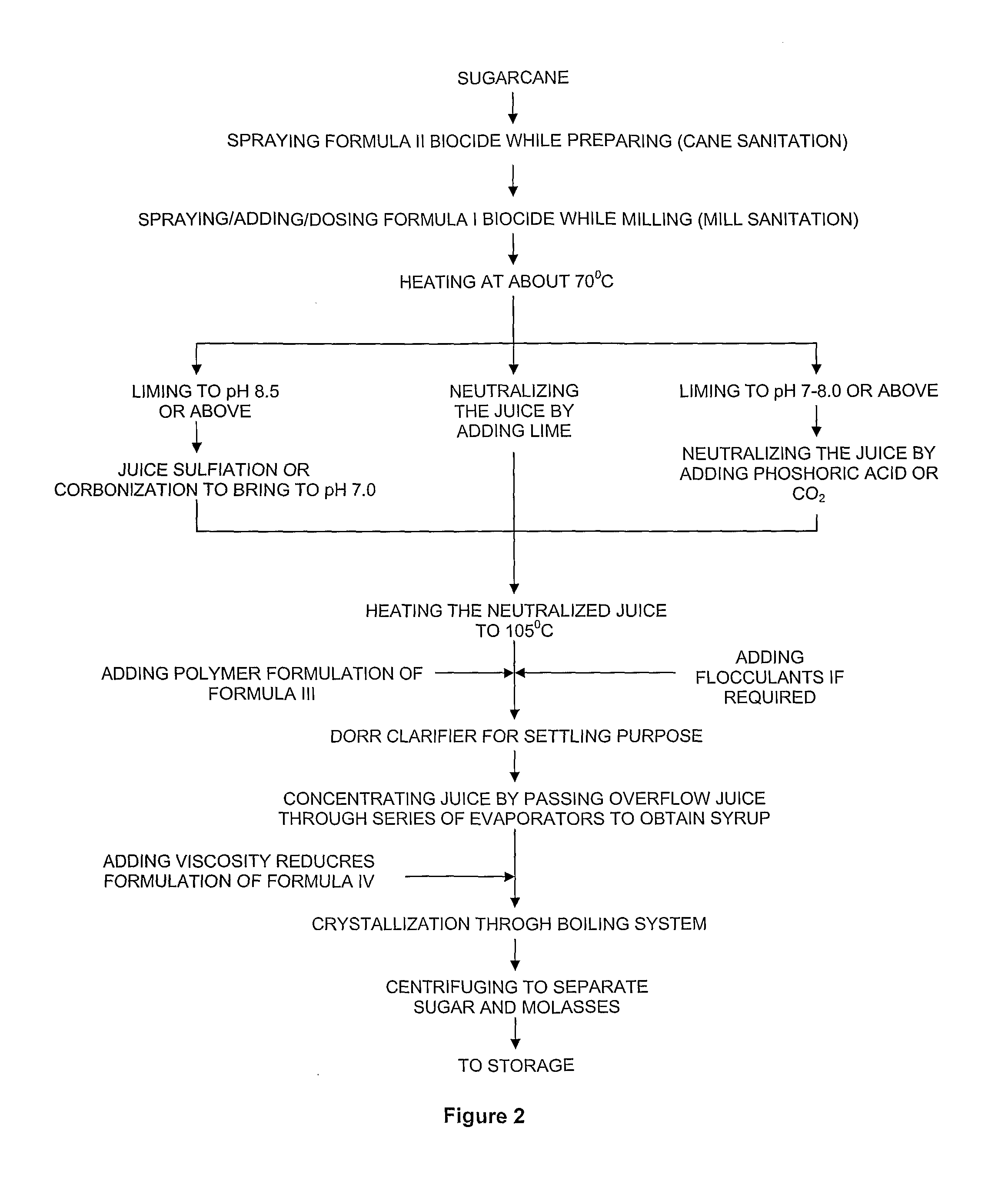Method for manufacturing sugar from sugarcane
a technology of sugarcane and manufacturing method, which is applied in the field of process for manufacturing sugar from sugarcane, can solve the problems of loss of final yield of sugar, further loss of sugar, and unfavorable human health, and achieve the effect of reducing or discontinuing the use of sulfur
- Summary
- Abstract
- Description
- Claims
- Application Information
AI Technical Summary
Benefits of technology
Problems solved by technology
Method used
Image
Examples
example 1
[0048]The method described in third embodiment is carried out at Kisanveer Satara Sahaksri Sakhar Karkhana Ltd., Bhuinj as an experiment. The quantity of raw material used is as follows:
Raw MaterialQuantitySugar can4500 MTBiocide Of Formula I22.5kgBiocide of Formula II45kgAmine polymer of formula III45kgViscosity Reducer formula IV45kg
[0049]As against the specifications results achieved by this process, the sugar was sent for analysis to Maarc Labs, Pune (an ISO 17025 lab accredited by NABL). The results are as follows:[0050]Color: >100 IU typical 87 IU by method 8 and 60 IU by method 10
Calcium: 18 ppm (mg / kg)
Conductivity ash: 0.0145%
Dextran: >40 ppm
[0051]Microbial count: 120 cfu per 10 g
SO2 content: >2 ppm
Moisture: 0.0156%
[0052]pH: 6.6
example 2
[0053]The method described in first embodiment is carried out at Kisanveer Satara Sahakari Sakhar Kharkhana Ltd., Bhuinj as an experiment. The quantities of raw material used are as follows:
Raw MaterialQuantitySugar can4500 MTBiocide Of Formula I22.5kgBiocide of Formula II45kgAmine polymer of formula III45kgViscosity Reducer formula IV45kg
[0054]The sugar produced was sent to United Sugar Company, Saudi Arabia for analysis. As against the specifications results achieved by this process are as follows:
Sample-Sample-2AnalysisUom1(with dust)MethodPol° Z 99.86 99.79GS 1 / 2 / 3-1ColourIU187180GS 1 / 3-7Ash (Conductivity method)% 0.024 0.023GS 1 / 3 / 4 / 7 / 8-13Reducing Sugars% 0.012 0.014GS 1 / 3 / 7-3Starch (By Plews Method)mg / kg113 95PlewsDextranmg / kgGS 1-15Filterability— 1.44 1.43USCMoisture (Loss on drying% 0.027 0.045GS 2 / 1 / 3-15at 105° C.)TurbidityIU 10.7 11.3GS7-21Sedimentmg / kg 69 80GS 2 / 3-19SO2 contentPpm 0 0
PUM
| Property | Measurement | Unit |
|---|---|---|
| temperature | aaaaa | aaaaa |
| temperature | aaaaa | aaaaa |
| temperature | aaaaa | aaaaa |
Abstract
Description
Claims
Application Information
 Login to View More
Login to View More - R&D
- Intellectual Property
- Life Sciences
- Materials
- Tech Scout
- Unparalleled Data Quality
- Higher Quality Content
- 60% Fewer Hallucinations
Browse by: Latest US Patents, China's latest patents, Technical Efficacy Thesaurus, Application Domain, Technology Topic, Popular Technical Reports.
© 2025 PatSnap. All rights reserved.Legal|Privacy policy|Modern Slavery Act Transparency Statement|Sitemap|About US| Contact US: help@patsnap.com



